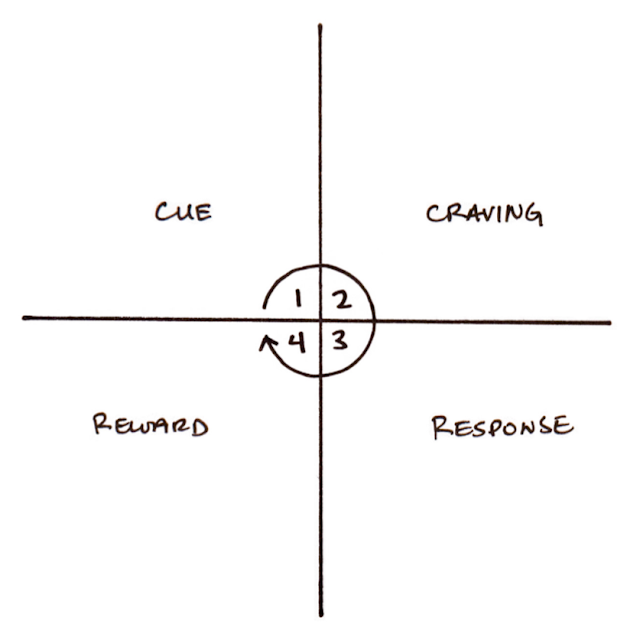We all know how important it is to have goals. Learning how to set and achieve goals is a great skill to have and can determine your success. However, goals encapsulate our aspirations and visions for our lives. They are the signposts that help to direct our energy to achieve something great.
Habits are where the rubber really meets the road. A goal without a habit is just a good intention. However, a habit is both an asset and a liability – we all know how hard it is to develop a new habit and make it stick i.e. exercise, and how hard it is to break a bad habit, i.e. quitting smoking. The truth is that if we know how to change our habits, we are closer to changing our lives. Research from Duke University claims that 40% of our daily behaviours are driven by habits.
The beauty of positive habits is that they free up your brain to deal with new and novel challenges. It means that you can batch familiar actions and make them autonomous – requiring less brain power and allowing for more efficiency.
The thing with habits is that you want to start small. You don’t want to start a habit that requires massive changes to your routine – because it won’t stick. You want to aim to improve by 1% every day, making small changes as you go along. So, if you want to create a habit for regular exercise, a good place to start would be taking the stairs instead of the elevator, or doing a few push-ups at a particular time of the day. The idea is to start small and build up from there.
Here’s how to make new habits stick.
The habit loop
You can form habits in every area in your life once you know how they work.
There are 4 important stages in forming every habit and making it stick:
-
-
-
Cue
-
Craving
-
Reward
-
Response
-
-

1. Cue
This is this trigger that reminds you to start your new habit. You can use whatever cue you like. Some of the most effective cues include: time, location and event. If you’ve you want to start forming an exercise habit, you can pick a time that you regularly work out. You could also use a location to remind you to work out. So, every time you walk into the kitchen to get something, you’re reminded to go to the gym. You could also use an event like the 6:00pm news to let you know that it’s time to get to the gym.
You need to decide on the best cue for your lifestyle. One that is consistent and in our faces. Without consistent cues, you’ll completely forget about your new habit in a week, and be left wondering why it didn’t stick.
2. Craving
The craving happens when we respond to our cue over time. We cross a minimal threshold, where the new habit becomes more familiar. The craving acts as an internal cue. It’s similar to Pavlov’s dogs and Skinner’s rats – you know, the scientists who trained animals to perform certain actions by changing their environment and rewarding them over time. Sticking with our exercise habit; the craving works by making us angsty around the time that we’d normally go to the gym. Our brain tells us, “hey, aren’t you meant to be at the gym right now” and we get a little bit of discomfort, which helps us to take action.
3. Response
The response is the action of getting ourselves to the gym. It’s the hands and feet of our habit loop. By responding to our cues and cravings, we start to build a system for our habits that triggers us to act. Again, be specific about the actions you’ll take to respond to your cue.
For example: as soon as the 6:00pm news finishes, I’m going to change into my gym clothes, say goodbye to my partner and head straight to the gym. I’ll be there for 1 hour and return straight home.
Specificity is key because you want these habits to slowly become autonomous.
4. Reward
Our brain is a habit-forming machine. We know this because it gives us a big pat on the back in the form of chemicals like dopamine and serotonin. The beauty of these chemicals is that when we’re rewarded with them, we start the habit-forming loop again, right back at the cue phase. It’s the reason that people achieve that degree at the end of their undergraduate, the promotion after years of working hard, and the slim and healthy body after months in the gym.
So now that you know how to build a strong habit, you can start using this knowledge to improve small areas in your life right now. Go easy and slow, pick something specific and aim to improve in that area by 1% each day. The Japanese call this ‘Kaizen’ – the philosophy of not focusing on how skilled you are right now, but how much you’re improving every day.
Key summary
The habit loop needs all 4 stages: cue, craving, reward and response to work together. After we repeat this cycle consistently in an important area in our lives, the system reinforces itself and becomes autonomous – leading to improved skills, positive lifestyle changes and more career growth in the long run.


